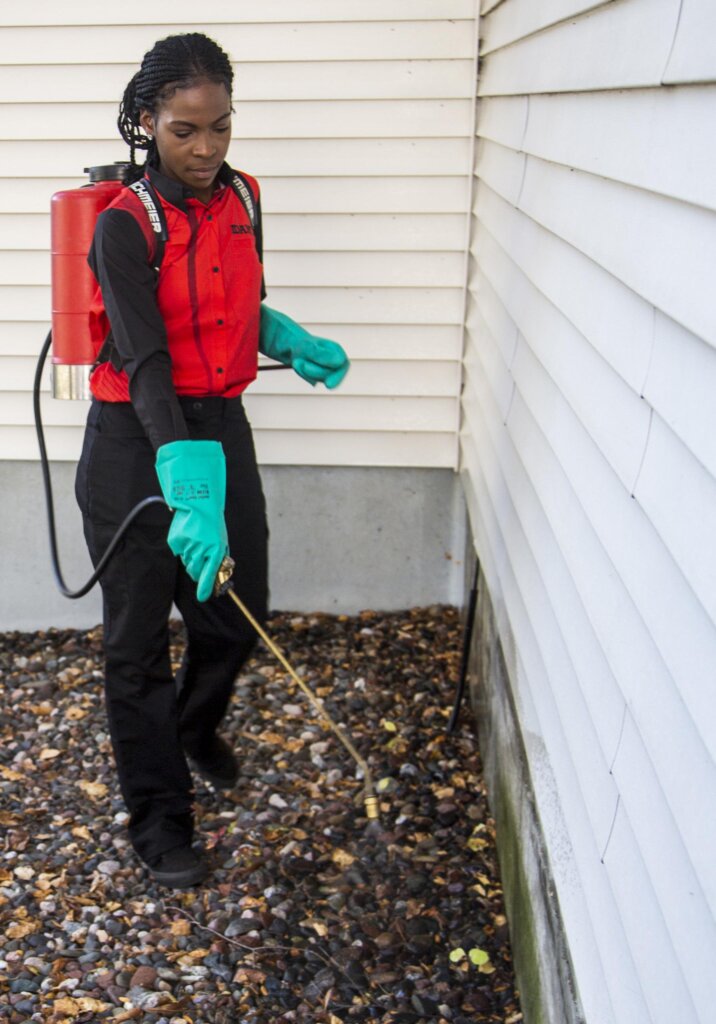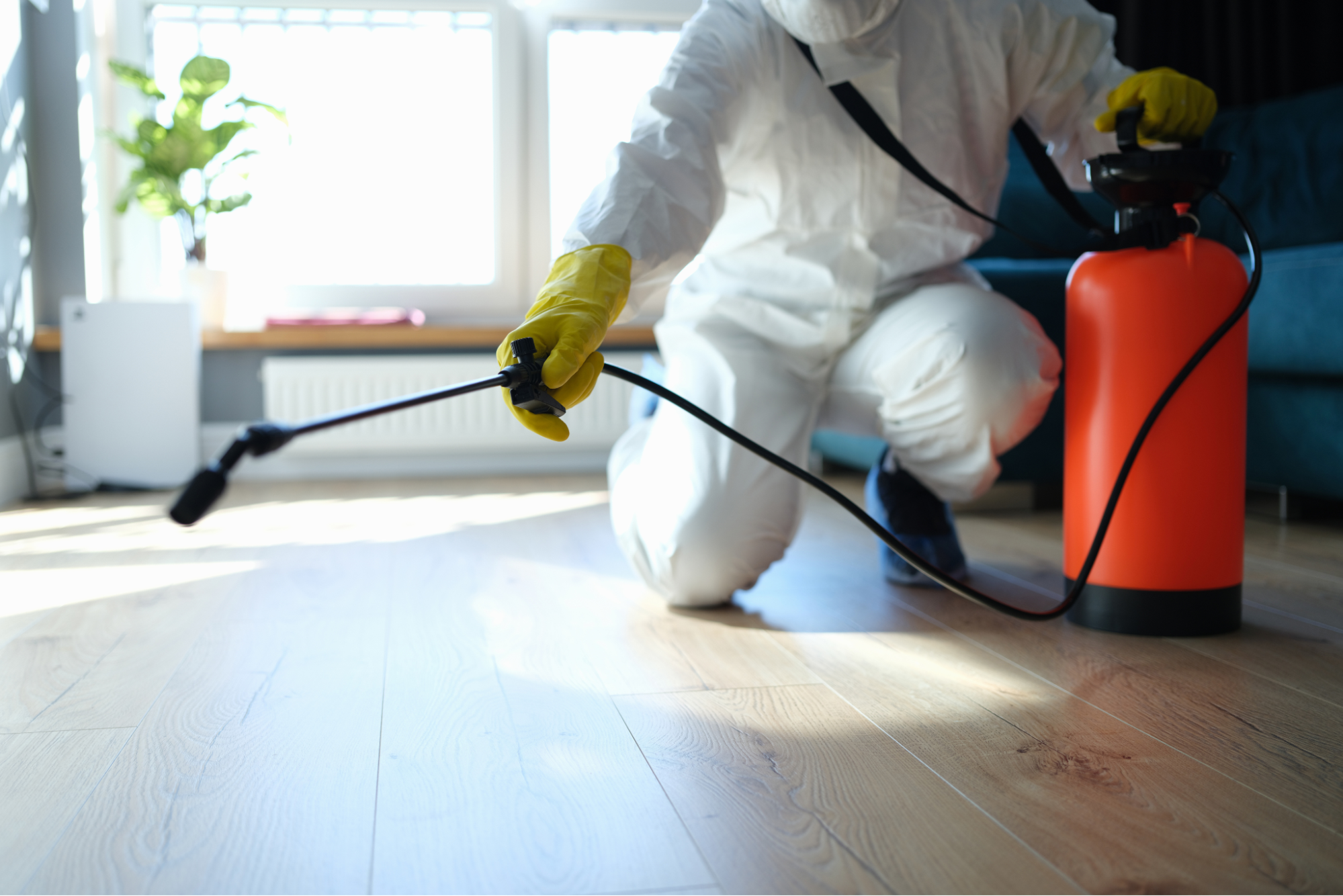Experienced A1 Exterminators Charlotte NC - Quick and Reputable Solutions
Experienced A1 Exterminators Charlotte NC - Quick and Reputable Solutions
Blog Article
Bed Bug Therapy Break Down: Contrasting Chemical Vs. Non-Chemical Solutions
In the realm of insect control, specifically when handling the consistent concern of bed bugs, the option in between chemical and non-chemical treatment solutions can be a crucial one. Both strategies supply unique advantages and disadvantages, affecting factors such as efficiency, safety considerations, and total cost. By analyzing the nuanced information of each approach, a more clear understanding of which course to pursue in dealing with a bed insect problem can be achieved.
Performance of Chemical Therapies
Chemical therapies for bed bug infestations have actually been extensively acknowledged for their potent and quick efficiency in removing these insects. When considering the performance of chemical treatments, it is vital to comprehend that they can offer a quick and detailed service to a bed pest trouble.
Furthermore, chemical treatments have the benefit of using residual results, indicating that they can remain to remove bed pests also after the preliminary application. This recurring activity is particularly helpful in combating any prospective re-infestations. Additionally, the fast action of chemical therapies can bring alleviation to individuals facing extreme bed bug problems, enabling them to restore control of their space rapidly.
Safety And Security Interest In Chemical Solutions
When using chemical remedies for bed bug therapy is making certain the safety of passengers and the environment,One important facet that requires careful consideration. While chemical therapies can be effective in eliminating bed bugs, they may position dangers otherwise handled correctly. Among the primary security concerns with chemical services is the prospective injury they can create to human health. Exposure to particular chemicals made use of in bed bug treatments can result in breathing problems, skin irritability, or various other damaging responses, especially in individuals with pre-existing conditions or sensitivities. Additionally, incorrect application or dosage of chemical pesticides can lead to hazardous deposits lingering in the cured area, posturing long-lasting wellness threats to occupants.
In addition, the ecological effect of chemical solutions is another substantial factor to consider. Some pesticides used in bed bug therapies might be damaging to useful insects, wild animals, and ecological communities if they seep into the dirt or water supply. It is vital to use chemical treatments judiciously, complying with safety standards, and thinking about less poisonous options to mitigate these threats and make sure the efficient and secure administration of bed insect infestations.
Advantages of Non-Chemical Approaches
Taking into consideration the prospective safety and security worries and environmental influence connected with chemical remedies for bed bug therapy, exploring non-chemical strategies provides an encouraging option with numerous distinct advantages. Non-chemical techniques supply a more secure choice for homes, especially those with family pets, people, or kids conscious rough chemicals. These methods get rid of the threats of exposure to hazardous materials, reducing the capacity for damaging health impacts. In addition, non-chemical treatments are ecologically pleasant, as they do not add to air or water pollution, making them a sustainable option for parasite control.
Additionally, non-chemical remedies can be reliable in targeting bed insects, including hard-to-reach areas where chemical therapies may not penetrate - A1 charlotte bed bug exterminator. Techniques such as heat therapy, vacuuming, heavy steam cleaning, and cushion encasements provide detailed elimination without the official source use of harmful chemicals.
Limitations of Non-Chemical Treatments

Furthermore, non-chemical therapies usually call for numerous applications to attain effective eradication. This can be lengthy and might not constantly assure complete elimination of all bed bugs and their eggs, particularly in surprise or hard-to-reach areas.
In addition, the success of non-chemical treatments greatly relies upon proper application and thoroughness, which can be challenging for people without professional expertise. Poor application of non-chemical approaches might lead to incomplete eradication, leading to persistent see here now infestations and the need for additional treatments.
Therefore, while non-chemical treatments have their advantages, it is important to acknowledge these limitations and consider them when identifying the most effective approach for taking care of bed insect problems.
Price Contrast: Chemical Vs. Non-Chemical Options
Provided the constraints connected with non-chemical treatments, a necessary facet to evaluate in the context of bed bug administration is the cost contrast between chemical and non-chemical alternatives. In contrast, non-chemical treatments like warmth treatment or heavy steam can be more costly, with expenses varying from $1,000 to $6,000 for an entire home. While the preliminary price of chemical treatments may seem lower, multiple treatments may be called for to fully eliminate the problem, possibly increasing the general cost.
Conclusion

Considering the potential security concerns and ecological influence associated with chemical services for bed insect treatment, exploring non-chemical approaches presents an appealing choice with several unique benefits.Offered the restrictions associated with non-chemical therapies, a vital facet to assess in the context of bed bug administration is the cost contrast between chemical and non-chemical alternatives. In contrast, non-chemical therapies like warm therapy or heavy steam can be a lot more pricey, with prices ranging from $1,000 to $6,000 for a whole home. While the initial expense of wikipedia reference chemical treatments may appear lower, multiple treatments might be needed to completely eradicate the invasion, possibly enhancing the total price.In verdict, when contrasting chemical and non-chemical bed bug therapy options, it is necessary to consider efficiency, safety and security, benefits, constraints, and cost.
Report this page